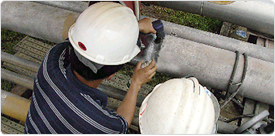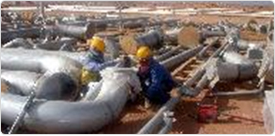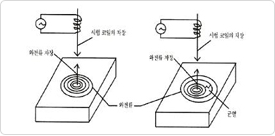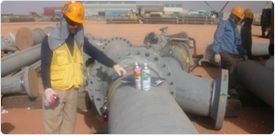Business Areas
Introducing All Nations Co., Ltd., opening the future.
Non-destructive testing
outline
Non-destructive testing uses radiation, ultrasound, electromagnetism, fluid, heat, and light to
determine the presence or absence of defects, stress state, characteristics, and As a safety evaluation technology that inspects material changes, soundness, etc.,
it can greatly contribute to improving product reliability, improving manufacturing technology, and reducing manufacturing costs.
In particular, developed countries have realized the importance of non-destructive testing since the early 20th century, spurring technological development and research, and it is now widely used across all industries. In Korea, the importance of non-destructive testing has been realized since the 1960s through the collapse of Seongsu Bridge, Sampoong Department Store, and Daegu City Gas Explosion, and has been proven to be an essential technology for preventing poor construction and maintenance.
In addition, maintenance inspections during construction and operation of petrochemical facilities, inspections to prevent water and sewage pipe leaks,
inspections before and during operation to ensure the safety of power plants, and construction and maintenance inspections of gas supply pipes and facilities. , construction and maintenance inspection of district heating heat pipes, precise safety diagnosis for construction and maintenance of various bridges and civil engineering structures, as well as all industrial facilities, bridges, tunnels, ports, repair facilities, civil engineering, building structures, parts, and materials.
It is widely applied to the back .

Phased Array Ultrasonic Testing (PA-UT)
Target of application
industry plant, power plant etc.
Target of testing
plate, bar, weld zone, pressure vessel, boiler tube, storage tank, oil&gas pipe-line etc.

Ultrasonic Testing (UT)
Applicable to
Industrial plants, power plants, steel mill piping networks, static structures, space aircraft airframes and engine construction work
Investigation subject
Monitors plates, bars, structural welds, aircraft and engine components, pressure vessels, and nuclear reactor components to detect deterioration in mobility.

Magnetic particle inspection (MT)
Applicable to
Manufacturing work such as heat treatment and polishing.
Investigation subject
Detect surface and subsurface defects using magnetic materials using equipment in the fields of engines, gears, and shafts.

Visual inspection (VT)
Applicable to
All fields of industry, including industrial plants, shipyards, power plants, steel mill piping networks, structure manufacturing, and construction work.
Investigation subject
Non-destructive testing of all types of materials, machined parts and internal surfaces of components, assemblies and systems, and an unlimited range of inspections.

Radiography (RT)
Applicable to
Industrial plants, shipyards, power plants, tanks, steel mill piping networks, steel structure manufacturing, construction work
Investigation subject
Detection of deterioration in mobility due to loosening or damage of castings, welds, brazed parts, aircraft and automobile components, etc.

Eddy current inspection (ECT)
Applicable to
Industrial plants, power plants, etc.
Investigation subject
Detection of size of corrosion areas Heat exchanger tube, boiler tube, air cooler, buried pipe before and during operation

Penetrant inspection (PT)
Applicable to
Welded joints, metal processing parts.
Investigation subject
Cracks formed during operation in welds, joints, pipes, castings and liquefied hydrogen tanks, containers, aluminum parts, gas turbine disks and blades, engine mounts and gears.

Leakage Test (LT)
Applicable to
Sealed products for chemical plants, shipyards, power plants, welded products, steel mill piping networks and construction works, etc.
Investigation subject
Vacuum leakage inspection of welds, brazing and joints, glass sealed products, vacuum chambers and metal gasket seals, and metal liquid containers and components.